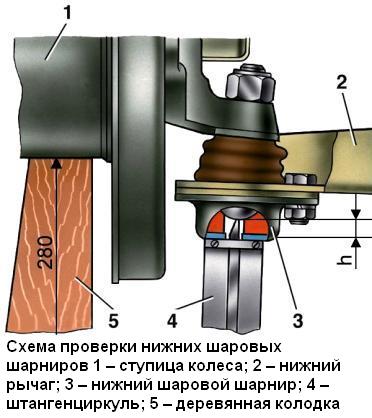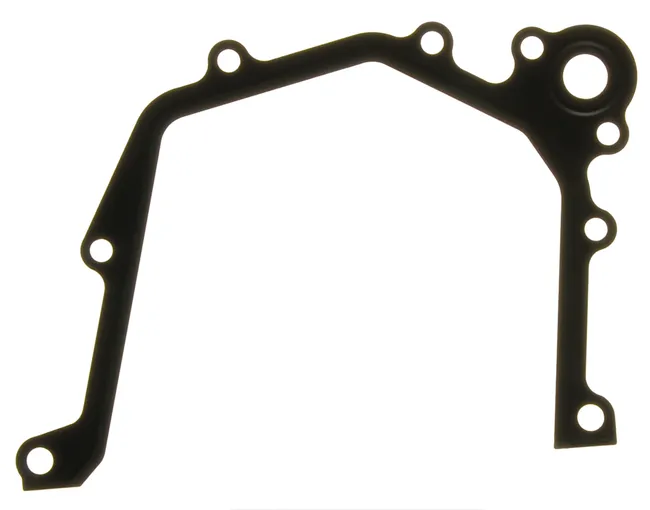
How to check suspension ball joints
Content
Ball joints are a suspension element that can be found on almost all cars. Ball joints are flexible joints that allow suspension components to move up and down and side to side, usually a full 360 degrees…
Ball joints are a suspension element that can be found on almost all cars. Ball joints are flexible joints that allow suspension components to move up and down as well as side to side, usually with a full 360 degree rotation.
Ball joints are typically a ball-in-socket design that is lubricated with grease and covered with a dust cover. Some will have an external grease fitting to add lubricant while others will be sealed design. While this pivot design is commonly used on many other suspension components such as tie rod ends and anti-roll bar links, ball joints are responsible for connecting the suspension control arms to the vehicle's steering knuckles.
Depending on the type of suspension, most vehicles will have upper and lower ball joints, which serve as one of the most important joints that connect the vehicle's frame to the suspension. When they fail, problems can occur with the car, ranging from minor noises and vibrations in the suspension to complete failure that renders the vehicle unusable.
This article shows you how to check ball joints for play and play to see if they need to be replaced. By listening to the car while driving, looking for any symptoms, and visually inspecting the ball joints when the car is up, you can figure out if the ball joints are causing problems with your car.
Method 1 of 2: Checking the ball joints on the car
Step 1: Take the car for a ride. Accelerate the car to maximum speed on a public road and listen for any sounds that may come from the suspension.
Ball joint wear is usually indicated by an intermittent knock that seems to be coming from one of the corners of the car.
Notice any unusual sensations on the steering wheel. Worn ball joints can cause the steering wheel to vibrate excessively and also cause it to wobble, requiring constant corrective action by the driver.
Step 2: Run over speed bumps. After you have accelerated the car at full speed, take it to the parking lot with speed bumps and drive it at low speed.
Stop and drive a few times, pass the speed bumps and make a few turns at low speed.
Listen for any knocks or knocks. These sounds can be amplified when cornering at low speeds and when passing speed bumps.
Step 3: Turn the steering wheel. After driving the vehicle at low speed, park the vehicle.
Rotate the wheels back and forth a few times, again listening for any potential signs of loose car ball joints.
- Functions: Be aware that any noises due to excessive wear on the ball joints are usually a knock that gets louder over time, having a more pronounced effect on the vehicle's suspension and steering.
Once the vehicle has been set in motion, it is time for a visual and physical inspection.
Method 2 of 2: Visual inspection of ball joints
Necessary materials
- socket
- Jack stands
- flashlight
- There is a pry
- Wrench
- Wooden blocks or wheel chocks
Step 1: Loosen the clamp nuts. Loosen the lug nuts, however, leave them hand-tight with the wheel still fairly tight on the vehicle.
This will allow you to move the wheel around its axis (without removing it).
Step 2: Jack up the car. Jack up the front of the car and secure it on jack stands. It will be much easier to check the ball joints without the entire weight of the car being on the wheels.
Step 3: Install wheel chocks.. Place wheel chocks or wooden blocks behind the rear wheels of the vehicle and apply the parking brake to prevent the vehicle from rolling.
Step 4: Pivot the tire around its axis. After the vehicle is raised, grasp the top and bottom of the tire and rock it in and out along the vertical axis of the wheel.
If both ball joints are in good condition, there should be practically no play.
Pay attention to any play that seems excessive, or noises made when the wheel is rocked back and forth, and where the sounds or play is coming from.
Functions: Any noise or play heard at the top most likely indicates a problem with the upper ball joint, while any play or noise coming from the bottom of the wheel is likely to indicate a problem with the lower ball joint.
A warning: When performing this test, make sure that the lug nuts are not loosened, as this may cause movement when the wheel wobbles. Ring nuts do not need to be fully tightened; they just need to be tight enough for the wheel to be secured to the hub.
Step 5: remove the wheel. When you're ready to proceed, remove the wheel and inspect the upper and lower ball joints with a flashlight.
- Functions: Instructions for removing a wheel from an axle can be found in our How to Change a Tire article.
Carefully inspect the ball joints for signs of rust, dust cover damage, lubricant leakage, or other potential problems that may indicate replacement is necessary.
Step 6: disassemble the ball joint. Take a pry bar and place it between the lower control arm and the steering knuckle, two pieces that are held together by a ball joint, and try to separate them.
Loose ball joints will have excessive play and movement when you push them in, they may even make a thud or click.
Step 7: Reinstall the wheels. After visually inspecting and checking the ball joints with a pry bar, reinstall the wheel, lower the vehicle and tighten the nuts.
Step 8: Check the pivots on the other wheels. At this point, you can move on to the remaining three wheels of the car using exactly the same procedures as described in steps 1-5.
Ball joints are one of the most important components in a car's suspension, and checking that they are working is a relatively simple check. Worn ball joints can cause all sorts of problems, from play in the steering wheel to noise when driving over bumps and uneven tire wear.
If you suspect that your ball joints may be worn, feel free to check them out. If necessary, contact a professional specialist, for example, from AvtoTachki, who will help you replace the front and rear ball joints.
